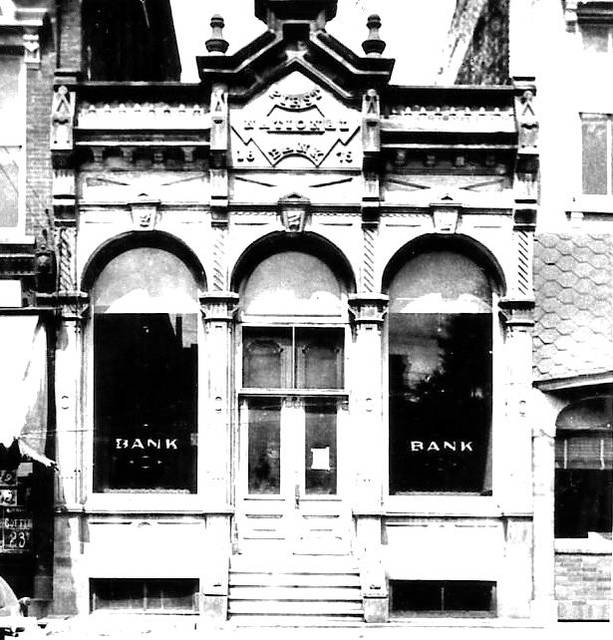As a youngster I remember going with my mother up the steps and into a building that to me looked like a bank but we bought our postage stamps there. I learned later that I was right- it was a bank, in the beginning and I want to share the history and fate of it.
The First National Bank building was erected at 102 East Main Street in 1876, now the site of The Bunker Mill Winery. Earlier there was another bank titled Banking Company of House, Beatty and Company which later became Trimble, Beatty and Wood Banking Company and finally after another change, when Beatty bought out both parties, it became Beatty Brothers Banking.
The town flourished with its factories, in town businesses, etc. until October 26, 1931. On that evening, the directors of the First National Bank ordered the temporary closure of the local institution after a tumultuous two days.
A run on the bank had occurred by panicky account holders over those two days resulting in a serious depletion of its resource. Before, money on deposit amounted to approximately $232,000.
Several days earlier a run on the Delaware Savings Bank in that county had caused it to be closed. The president of the First National in Cardington,
F. P. Hills, was also cashier of the Delaware Savings Bank. It is unknown if this had anything to do with the mass withdrawals of the bank in Cardington.
Regardless, word spread quickly throughout the village and patrons raced to the bank out of fear and losing their money. Bank examiners later investigated and found the Cardington Bank to be in good condition but the damage had been done and the First National Bank was placed in receivership.
The bank’s directors explained that even though it was sound, the bank was unprepared to handle the heavy withdrawals of panicky account holders. Thus, they temporarily locked the doors. Fear of losing life’s savings may have been the powerful force that motivated people to take drastic action and it was thought by many that unfounded rumors are what caused the run on the Cardington Bank.
The First National Bank never re-opened and the directors decided to liquidate the assets and depositors got a 50 per cent dividend. Three years later in 1934, the Federal Deposit Insurance Corpora- tion insured all demand deposits of member banks up to $5,000 to prevent bank runs.
It took only two business day to close the First National Bank in Cardington forever.
It became the town post office until the new post office was built in 1948. Later, in 1964, the owners of the Curl Mortuary located next door to the bank, purchased the property and razed the building.
I do remember gazing at those beautiful floors while my mother purchased postage stamps in the 1940s.
70 years ago: Miss Ruth Dukes, of Cardington, sailed for Japan where she was hired to teach the school children of the U.S. Army occupational forces in Yokohama.
David Earley of Cardington, was granted his pharmacist’s certificate by the state board of pharmacy. He graduated from Ohio Northern University in June. Pearl Sheese resigned as Cardington’s village marshal but continued as street commissioner for the town.







